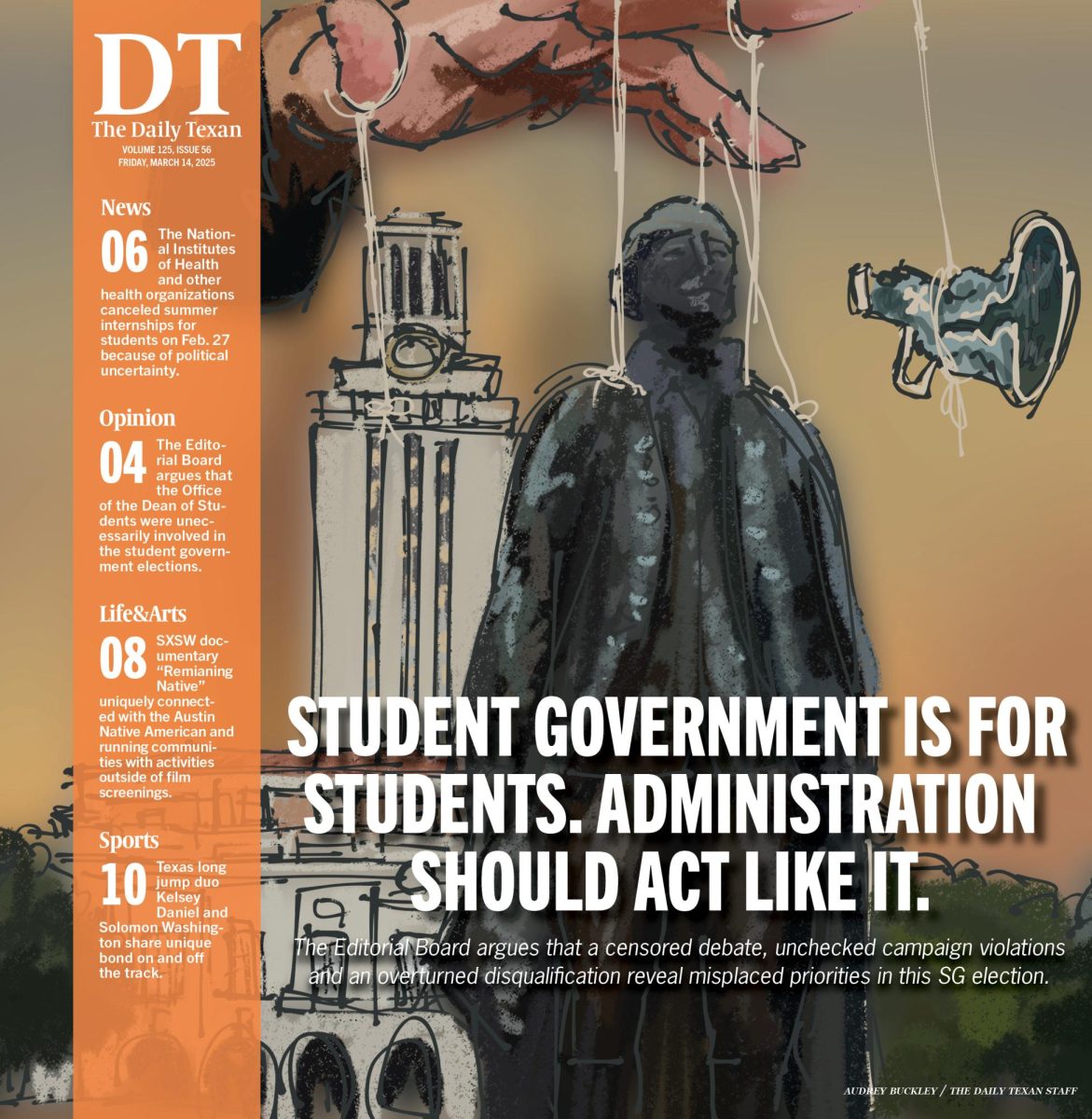UT’s ADA Prioritization Committee deserves more funding
November 15, 2022
In 1990, the Americans with Disabilities Act established construction standards for physical accessibility. However, because many of UT’s buildings were built before 1990, they fail to meet these standards.
While UT has made an effort to bring buildings into ADA compliance through action items such as the 2020 ADA Title II Transition Plan, it still has a long way to go. With financial limitations, campuswide progress and renovation is slow. To make further progress with campus accessibility issues, the University should allocate additional funding to the Division of Diversity and Community Engagement, or DDCE.
However, budgeting depends on the ADA Prioritization Committee, which is chaired by Project Management and Construction Services. The committee, made up of faculty, students and staff, meets quarterly to prioritize which projects happen on the UT campus.
Neuroscience senior Shubhi Nanda, an ADA Prioritization Committee member, described some of the accessibility challenges she’s heard of.
“I’ve definitely heard the stories where some of my friends with physical disabilities had to drop a class because they couldn’t get to their classroom,” Nanda said.
Students with physical disabilities deserve to take the classes they want to take without any outside interference.
“If people are not able to attend their classrooms … and they’re not given the same opportunity as other students, then they’re not going to be able to succeed, and they’re going to be put at a disadvantage,” said Madyson Mireles, a sociology sophomore and co-director for UT Student Government’s diversity and inclusion agency. “I just feel like it’s not allowing people to succeed.”
Jennifer Maedgen, senior associate vice president and chief of staff of the DDCE, said the University allocates $3.5 million dollars each year to campus accessibility projects. According to the ADA Transition Plan, it will take $95 million to address all campus accessibility needs. Currently, the ADA Prioritization Committee is prioritizing paths of travel; next, they’ll focus on general building accessibility.
The ADA Prioritization Committee has tried to use their allocated $3.5 million dollars for the transition plan. However, they’re often forced to address urgent needs first, such as renovations that require UT to make a building ADA compliant, outside of the transition plan’s agenda items. This is often an expensive distraction, which forces the committee to be strategic with their limited funds.
The ADA Prioritization Committee is already working above and beyond ADA compliances to create a more accessible and inclusive campus, but they deserve more support from UT.
“Where is (the committee funding) on their list? … Even if $3.5 million might seem like a lot, what is it in comparison to their priorities like our athletics department?” Mireles said.
Students with physical disabilities deserve to have an equitable campus, not one with inherent obstacles that interfere with their access to education. The University must prioritize students with disabilities and their needs through proper funding. Such funding dedicated to increasing access and inclusion on campus should be raised in order to accommodate both issues that arise but also what the community wants.
“If they have to fight so hard for the basic needs of students to go to class, then the funding is not where it needs to be,” Mireles said.
Muthukrishnan is a government freshman from Los Gatos, California.
















